The origins of measuring
Man is the metre of all things, the hand is the instrument of instruments, and the mind is the form of forms.
-Aristotle
Descending from the trees into open land and standing up on two legs left our hands free for other purposes. Hands and feet are what both measuring and counting started with. Originally, measuring helped to understand sizes, distances and even time. Early humans used tools to count and to symbolise quantity. Some artefacts may have been used to keep track of animals hunted or the phases of the moon. Sticks and stones were probably used to keep track of quantities, but were too ephemeral to preserve any information.
Throughout history, our understanding of nature has depended on the measuring instruments we use. But these measurement instruments have also had a significant role in what we can observe and have guided our interpretation and perception of the world. Measuring with our bodies, then by comparing and finally by developing measuring instruments allowed us to reach out into the vast, from the size of the clouds to the movement of the stars. Instruments even enable us to look into the imperceptible, from discovering microbes to learning about the movement of atoms.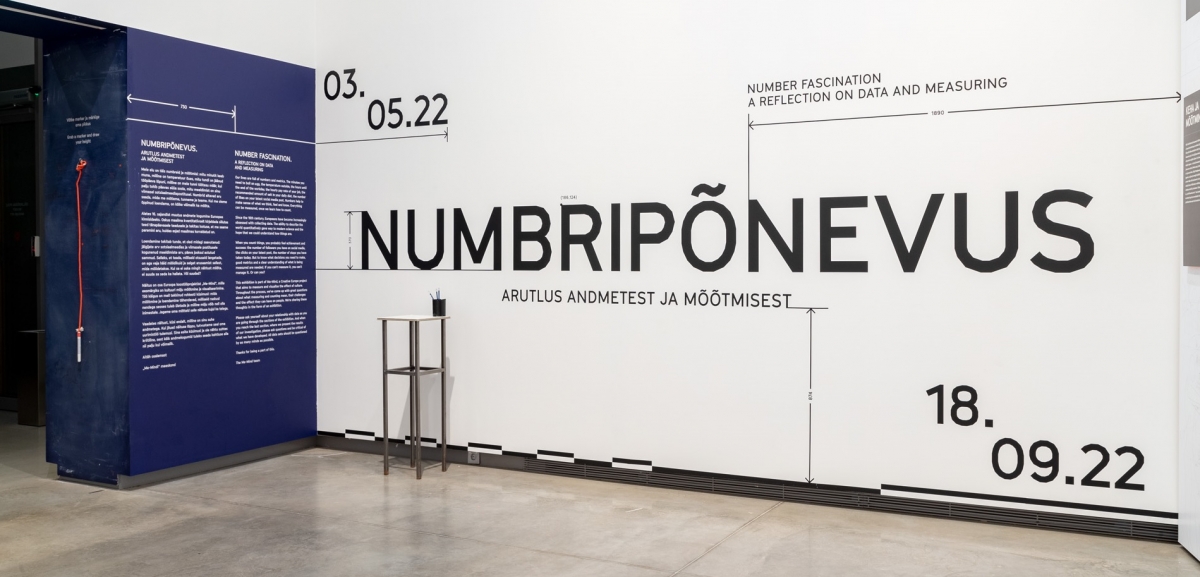
Measurement is important for the functioning of the society. In ancient times, measurement was about comparison: suitable measures were taken from the everyday surroundings. For example, distances were measured by the length of the day's journey, in steps, by the flight of an arrow or the distance of a spear or a stone throw. These concepts were sufficiently understood in the same way.
The sizes of the units varied both by region and by activity. For example, when sowing seed, the size of each handful and the length of the step were important, and the seed basket had to be of a comfortable size.
The most common units of measurement in Estonia were the bushel, the seed basket and the stoup, which were used before the 13th century. The rye harvester’s pay was "one bushel of grain per vakamaa (0.18 hectars)". In Livonia, the Riga bushel was used; in Estonia, the Tallinn bushel (about half a Riga bushel). Folk measurement units disappeared from use in 1929 after Estonia transitioned to the metric system.
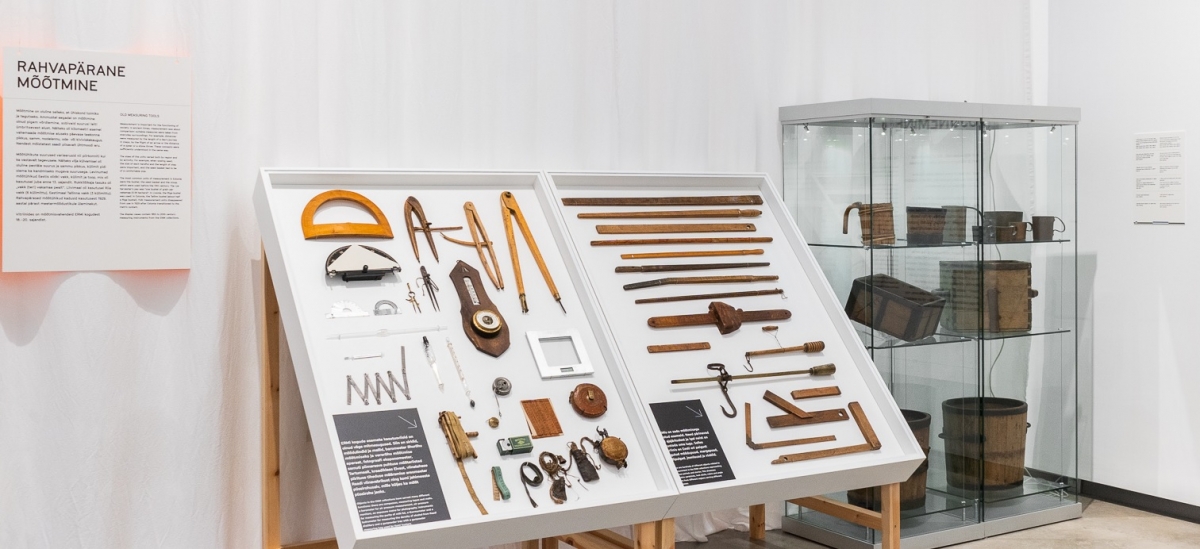
Using the body as a measuring tool
All human societies make measurements, but not all use counting or numbers. The first measuring tools based on the body were used even for complex tasks. In ancient Egypt, the Royal Cubit was applied in the construction of buildings. Counting was also a bodily activity - counting on the fingers existed even before numbers. The numerals most of us know today developed in India. Many modern rules for multiplication, division, square roots and the like were first born there. Eventually, measuring systems independent of the immediacy of the body evolved. Giving a numerical value to measurement enabled statistical calculations. Today this is the basis of the idea of the quantified self. We understand that gathering data about our bodily functions and practices gives us knowledge about ourselves.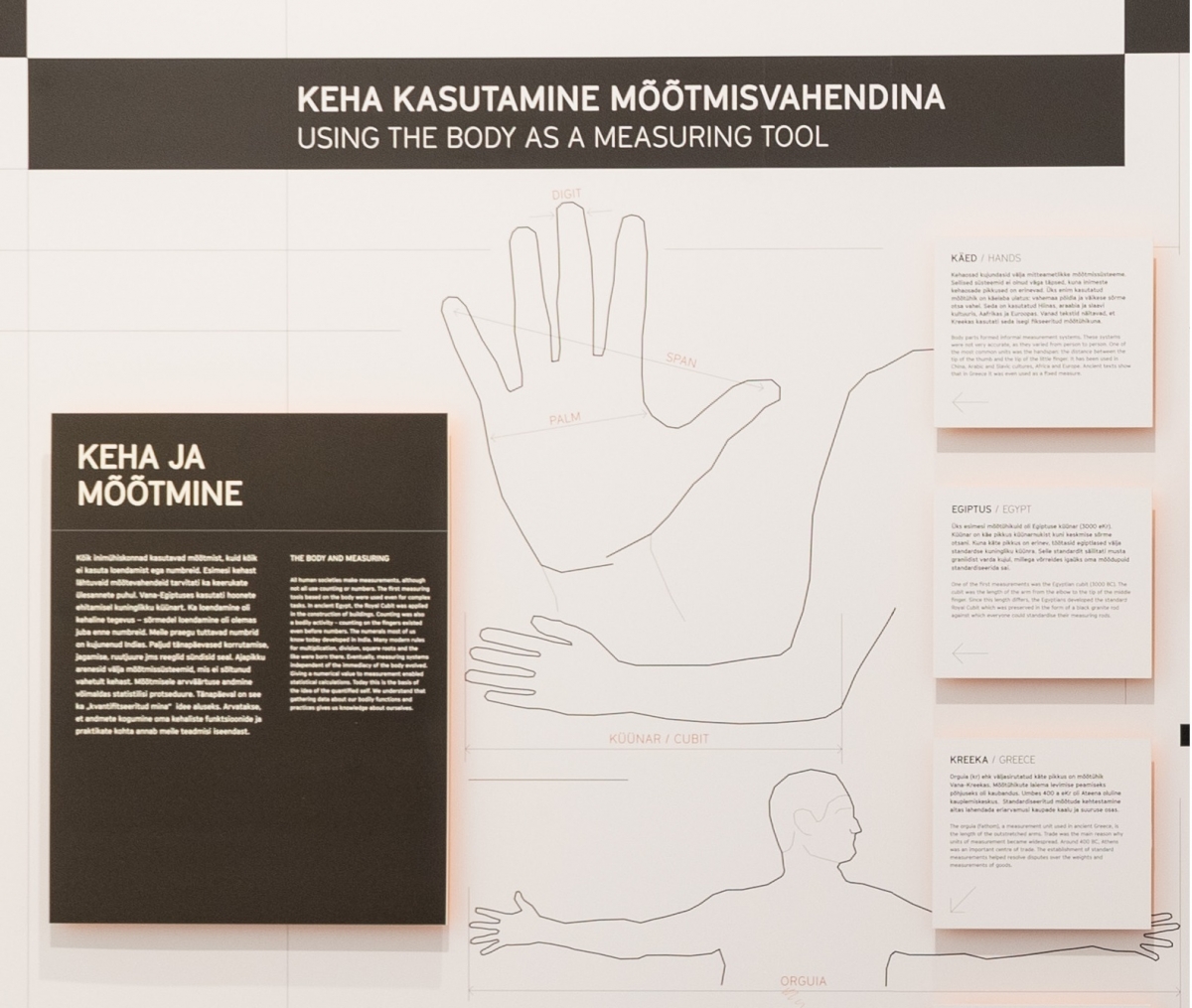
Body parts formed informal measurement systems. These systems were not very accurate, as they varied from person to person. One of the most common units was the handspan: the distance between the tip of the thumb and the tip of the little finger. It has been used in China, Arabic and Slavic cultures, Africa and Europe. Ancient texts show that in Greece it was even used as a fixed measure.
One of the first measurements was the Egyptian cubit (3000 BC). The cubit was the length of the arm from the elbow to the tip of the middle finger. Since this length differs, the Egyptians developed the standard Royal Cubit which was preserved in the form of a black granite rod against which everyone could standardise their measuring rods.
The orguia (fathom), a measurement unit used in ancient Greece, is the length of the outstretched arms. Trade was the main reason why units of measurement became widespread. Around 400 BC, Athens was an important centre of trade. The establishment of standard measurements helped resolve disputes over the weights and measurements of goods.
In 1948, the Swiss architect Le Corbusier proposed a system of measurements based on the height of a man with his arm raised (2,26 m), called ‘Le Modulor’. His idea was to create a scale of harmonic measures that set architectural elements in proportion with human stature. The Modulor became the basis of all his later architectural work.
Using the body to count
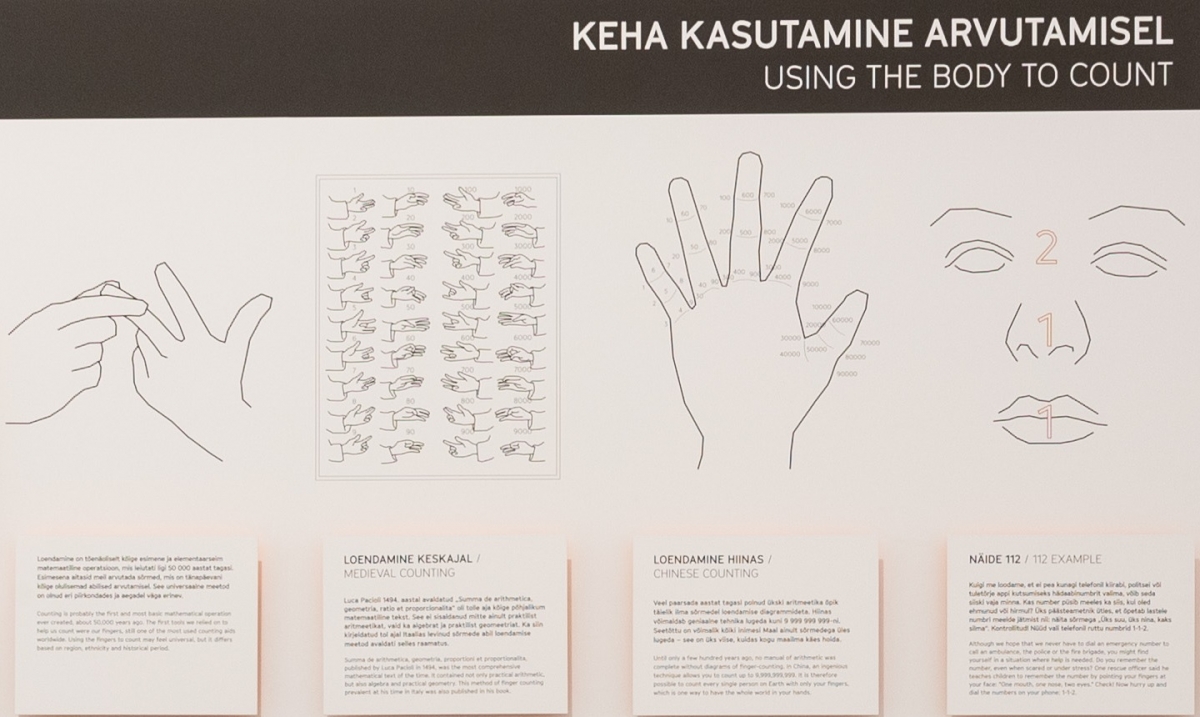
Counting is probably the first and most basic mathematical operation ever created, about 50,000 years ago. The first tools we relied on to help us count were our fingers, still one of the most used counting aids worldwide. Using the fingers to count may feel universal, but it differs based on region, ethnicity and historical period.
How high can you count on your fingers?
Summa de arithmetica, geometria, proportioni et proportionalita, published by Luca Pacioli in 1494, was the most comprehensive mathematical text of the time. It contained not only practical arithmetic, but also algebra and practical geometry. This method of finger counting prevalent at his time in Italy was also published in his book.
Until only a few hundred years ago, no manual of arithmetic was complete without diagrams of finger-counting. In China, an ingenious technique allows you to count up to 9,999,999,999. It is therefore possible to count every single person on Earth with only your fingers, which is one way to have the whole world in your hands.
Although we hope that we never have to dial an emergency number to call an ambulance, the police or the fire brigade, you might find yourself in a situation where help is needed. Do you remember the number, even when scared or under stress? One rescue officer said he teaches children to remember the number by pointing your fingers at your face: "One mouth, one nose, two eyes." Check! Now hurry up and dial the numbers on your phone: 1-1-2.
Using data to understand the body
Unlike digital tracking, tracking using paper planners, journals and calendars is private when not deliberately shared. The combination of self-tracking and visualizing data collection and presentation is popular in the planner community subculture. How filled should your bottle be by the end of the day? It depends on which climate zone you are in and on your activity levels, health and other factors.Tracking sleep digitally and feeding the data into databases linked to the health and wellness sector is widespread among the owners of smartwatches. But do you actually need all this data to make decisions or is it rather needed by the fitness industry? Sometimes logging your sleep in a diary or health journal becomes a simple ritual and is all you need.
Quantified self practices often involve digital self-tracking with the goal of improving physical, mental and emotional wellbeing. Tracking daily steps is one of the most popular self-tracking habits. You have probably heard that one should walk 10,000 steps a day. But do you know that the recommendation depends on your health, age and physical activity goals?
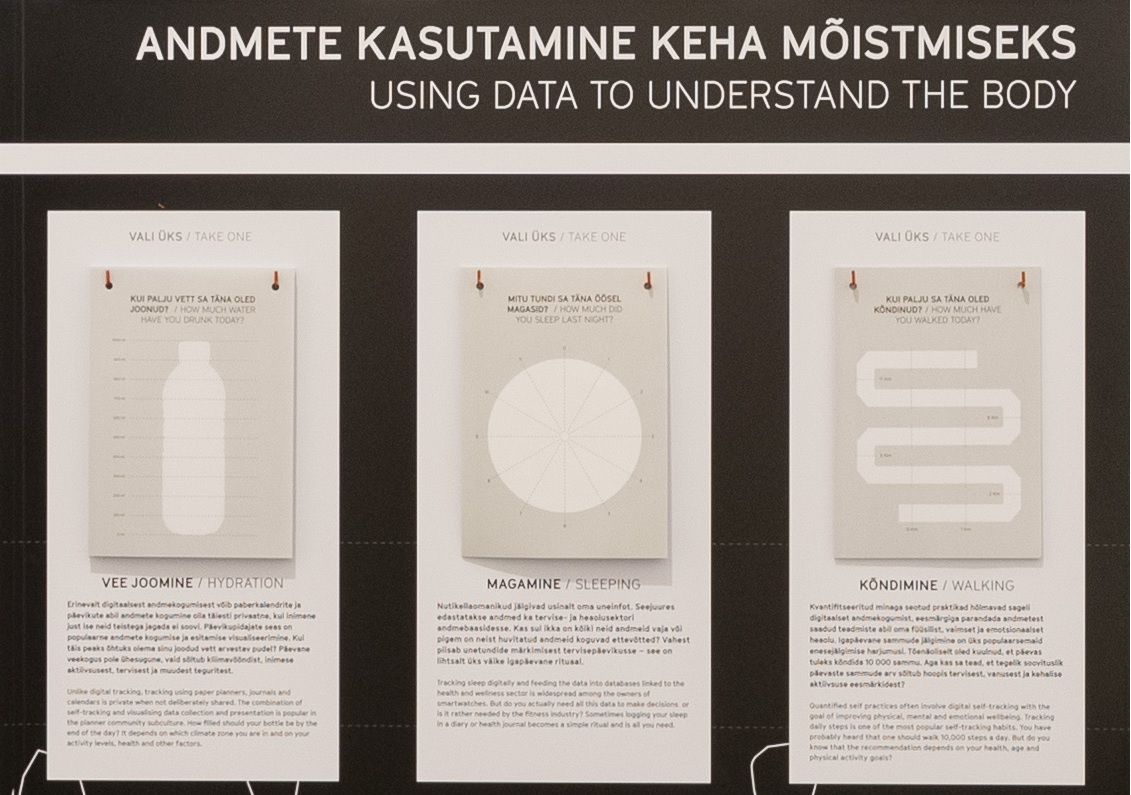
Photos: ENM, Domestic Data Streamers


